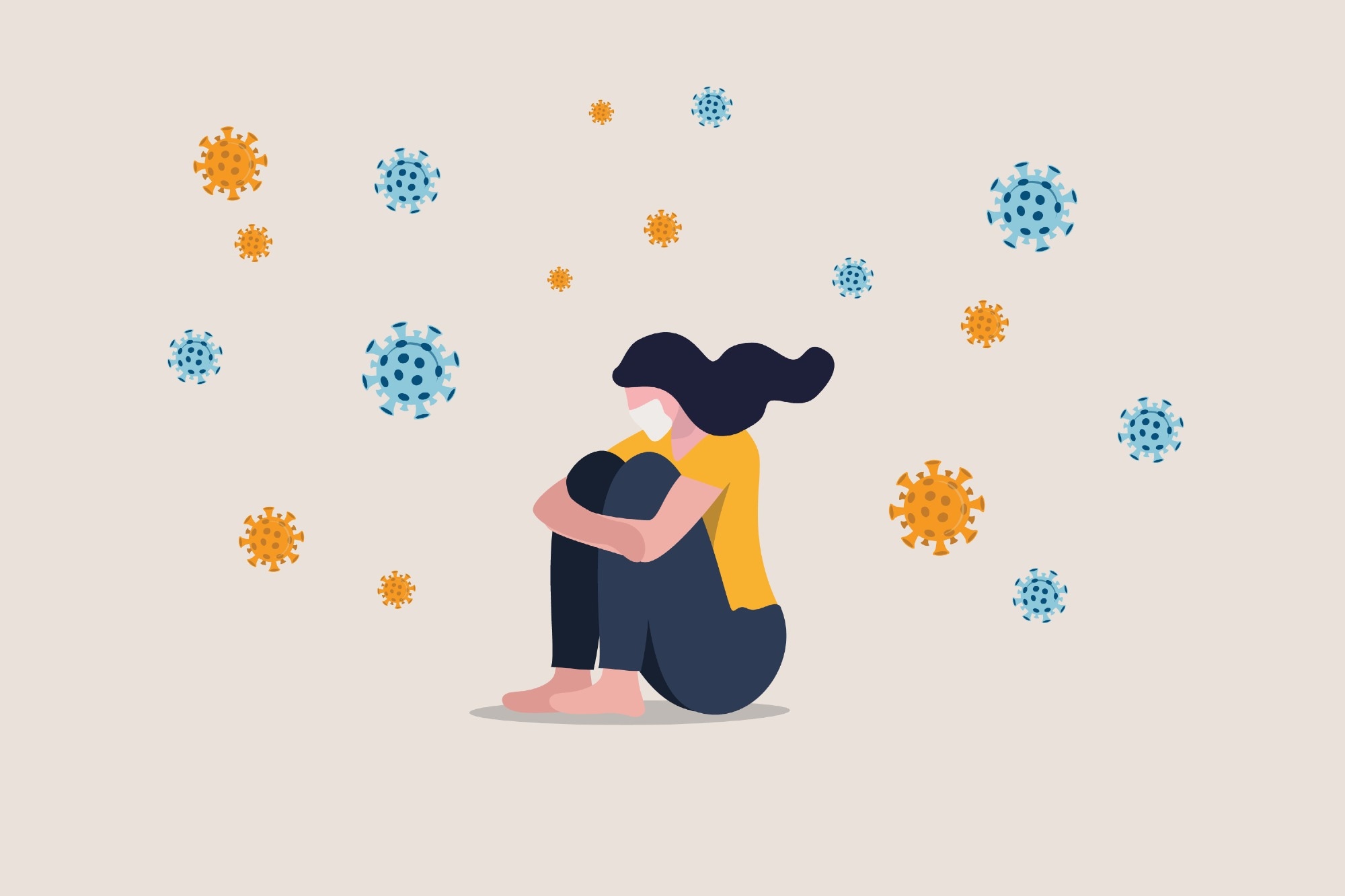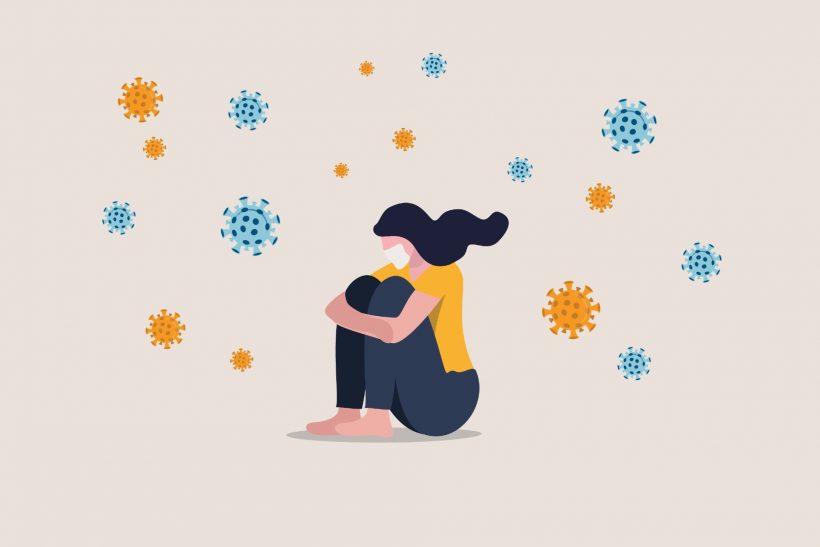As of October 3rd, 2022, the COVID-19 pandemic has led to more than 615 million cases of severe acute respiratory syndrome coronavirus 2 (SARS‑CoV‑2), along with over 6.5 million deaths globally, according to the World Health Organization (WHO). Chills, fever, shortness of breath, loss of smell, fatigue, diarrhea, nausea, and headache are some common COVID-19 symptoms. Furthermore, numerous case reports have documented the impact of SARS‑CoV‑2 infections on the human body's organs and systems. Several questions have also been raised about its effect on women's reproductive health, especially pregnancy and fertility.
Various studies have reported menstrual cycle irregularity among women following SARS‑CoV‑2 infection, although menstruation is an understudied topic. Recent studies indicated about 16% of women reported menstrual disturbances following SARS‑CoV‑2 infection. Additionally, a meta-analysis showed an association of SARS‑CoV‑2 infection with stillbirth, pre-term birth, and lower birth weight.
Sex differences play an important role in disease pathogenesis, prevalence, and modulation. Potential differences for such sex differences can be fluctuation of hormones during pregnancy and menstruation. Additionally, sex differences in immune responses have been observed for many viral respiratory infections. Although the impact of female sex hormones on the immune system is well described, the reciprocal relationship is not.
A new review in the Biology of Reproduction journal analyzed the relationship between the immune system and the female reproductive system while focusing on the effects of COVID-19-associated immune responses on the reproductive system. The study searched PubMed to identify peer-reviewed literature in English up to May 2022 and finally included 83 studies.
 Study: The influence of COVID-19 infection-associated immune response on the female reproductive system. Image Credit: eamesBot / Shutterstock
Study: The influence of COVID-19 infection-associated immune response on the female reproductive system. Image Credit: eamesBot / Shutterstock
Immune responses against COVID-19
SARS-CoV-2, the causative agent of COVID-19 disease, is a positive-sense single-stranded RNA virus that can infect pulmonary epithelial cells by binding viral spike glycoprotein to the angiotensin-converting enzyme (ACE2) receptor. The pulmonary epithelial cells then initiate immune responses by secretion of interleukin 8 (IL-8) and attraction of neutrophils. The immune cells can then activate other pathways to trigger the immune response, such as the Janus Kinase – Signal transducer and activator of the transcription pathway (JAK-STAT). The JAK-STAT pathway induces the transcription of nuclear factor kappa B (NF-κB) and other factors that lead to the production of pro-inflammatory cytokines. Research has shown high levels of pro-inflammatory cytokines, including IFN-g, IL-1B, IL-6, IL-2, and chemokines, increase the severity of COVID-19 disease.
SARS-CoV-2, like other viral infections, affects the hypothalamic-pituitary-adrenal (HPA) axis. Although the cytokines induce the hypothalamic corticotropin-releasing hormone (CRH) through the HPA axis to stimulate glucocorticoid release, they can also directly act on the adrenal and pituitary glands to release glucocorticoids. Glucocorticoids are produced to reduce the effect of cytokine storms that can result in the death of COVID-19 patients. However, glucocorticoids can have systemic symptoms and can lead to anovulatory infertility.
Impact of progesterone and estrogen on immune cells
Previous studies have observed that the hormonal fluctuation of progesterone and estrogen during the menstrual cycle can affect the immune system in many ways. Progesterone receptors are found on natural killer (NK) cells, macrophages, dendritic cells, and CD4+ lymphocytes, while estrogen receptors are found in all immune cells.
The menstrual cycle comprises four phases: the follicular, menstrual, luteal, and ovulation. Estrogen is dominant during the follicular phase, while estrogen and progesterone levels are high during the luteal phase. Progesterone has anti-inflammatory effects, while estrogen has pro-inflammatory effects at low concentrations and anti-inflammatory effects at high concentrations.
Furthermore, estrogen can also inhibit the expression of IL-6, one of the most critical COVID-19-related cytokines that cause the cytokine storm through disruption of NF-κB transactivation. This suggests that estrogen can be a protective factor against several infections, including SARS-CoV-2, and might also be responsible for a more significant immune response of women to COVID-19 than men. Estrogen levels are negatively correlated with inflammatory cytokines that can help to protect women from severe cytokine storms and complications of COVID-19.
Role of immune cells in the endometrium
The endometrium comprises a highly active cytokine network that can help in the recruitment or activation of leukocyte subtypes in the endometrium. Previous studies have also found up-regulation of macrophage-derived chemokine (MDC) and IL8 that can help to trigger an influx of neutrophils in the endometrium before menstruation.
Endometrial leukocytes consist of NK cells, macrophages, and neutrophils that can protect from microbial invasion during the secretory phase of the menstrual cycle. B-lymphocytes have also increased during this phase, while there is a decrease in T-lymphocyte activity. The activity of T lymphocytes increases during the early to mid-proliferative state and helps to clear out residual endometrial debris following menstruation. Recent studies have indicated that endometrial immune cells dysregulation due to COVID-19 infection can cause abnormal uterine bleeding.
Effect of SARS-CoV-2 infection on the menstrual cycle
Currently, studies analyzing the impact of SARS-CoV-2 infection on the menstrual cycle are scarce. A recent study indicated that 20% of SARS-CoV-2-positive women showed a decrease in menstrual volume, 9% showed an increase in menstrual volume, and 75% showed no change in menstrual volume. Another study reported that about 16% of women experienced menstrual disturbances following SARS-CoV-2 infection. However, most studies showed no significant sex hormone difference between controls and COVID-19 patients, severe and mild patients, or patients with and without menstrual changes. Therefore, it is assumed that immune response-mediated stress might cause temporary menstrual cycle changes due to interaction between the hypothalamic-pituitary-gonadal axis (HPG) and the HPA axis.
Interaction between the HPG and HPA axes
Glucocorticoids which are the end-products of the HPA axis activation have been reported to inhibit gonadotropin secretion, thereby suppressing the activation of the HPG axis. This process can be modulated by female sex hormones, progesterone, and estrogen. Additionally, several studies have reported higher cortisol levels during the follicular phase compared to the luteal phase, which might also influence the activation of the HPA axis.
Those infected during the follicular phase have also been reported to have higher suppression of the HPG axis and the gonadotropin-releasing hormone (GnRH). Moreover, CRH has been observed to be involved in suppressing the HPG axis independent of glucocorticoids. Cytokine storms resulting due to SARS-CoV-2 infections can therefore alter the HPA axis by increasing glucocorticoids and CRH, which might lead to menstrual disturbances, heavy menstrual bleeding, and anovulatory cycles.
Effect of COVID-19 vaccine on the menstrual cycle
Currently, the menstrual disturbances brought about by COVID-19 vaccinations are observed to be temporary and resolve within two cycles. The most commonly reported menstrual disturbances include shorter inter-menstrual intervals and prolonged or heavier bleeding. Women who experienced menstrual disturbances following the first dose were at a higher risk of developing more severe symptoms following the second dose. The age of the women, history of pregnancy, second vaccine dose, and smoking history were reported to be predictors of menstrual disturbances following SARS-CoV-2 infection. Additionally, the menstrual disturbances were similar for all the different types of COVID-19 vaccines.
Effect of SARS-CoV-2 on the placenta
The impact of SARS-CoV-2 infection on the placenta is still poorly understood. For viral infection and replication, the spike protein binds to the ACE-2 receptor of the target cell. The virus and host cell membrane fusion occurs by priming the spike protein with cellular trans-membrane serine protease 2 (TMPRSS2). Cells that co-express ACE-2 and TMPRSS2 are at a higher risk of SARS-CoV-2 infection. However, only a few placental cells were found to co-express ACE-2 and TMPRSS2.
The decidual immune reaction and expression of interferon-induced transmembrane (IFITM) antiviral transcripts can play an essential role in protecting SARS-CoV-2 infection of the placenta. IFITM are proteins expressed in placental and epithelial cells and help inhibit the replication of viruses. However, ex vivo studies have shown that SARS-CoV-2 can infect and propagate in the human placental cells, which might be due to placental ischemia that occurs due to maternal hypoxia or cytokine storm in adult COVID-19 patients.
Effect of SARS-CoV-2 on pregnancy
Several studies have reported that SARS-CoV-2 infections are associated with adverse pregnancy outcomes. These include lower birth weight, pre-term birth, stillbirth, and post-partum hemorrhage. These outcomes can be due to an increased inflammatory state associated with SARS-CoV-2 infections. Due to the cytokine storm generated by the SARS-CoV-2 infection, corticosteroids are produced in greater amounts, causing pre-term delivery. Miscarriages can be brought about by systemic inflammation, unbalanced Th1/Th2 response, or increased Th17/Treg ratio.
Effect of COVID-19 vaccine on pregnancy
The American College of Obstetricians and Gynecologists (ACOG) and the Center for Disease Control (CDC) recommend vaccinating pregnant and lactating women against SARS-CoV-2. Recent research has indicated that COVID-19 vaccines were safe and effective in pregnancy and were not associated with any neonatal adverse events. However, few non-serious symptoms, such as uterine pain, uterine contraction, and uterine tension, have been associated with COVID-19 vaccines.
Effect of COVID-19 on fertility
The immune response against SARS-CoV-2 infection was observed not to affect fertility for females. However, SARS-CoV-2 infection was found to impact the male reproductive system. A recent study highlighted a short-term reduction in fertility in SARS-CoV-2 -positive males. Male sexual dysfunction resulting from COVID-19 can last up to 7 months following infection. The cytokine storm due to SARS-CoV-2 infection can cause damage to the blood-testes barrier as well as cause an increase in reactive oxygen species (ROS) production, which in turn affects motility, spermatogenesis, and fertilization of mature sperms.
Conclusion
Cytokine storm due to SARS-CoV-2 infection can cause short-term menstrual disturbances, pre-term delivery, and miscarriages. It can also adversely impact the male reproductive system causing a reduction in fertility and erectile dysfunction. Further research needs to be done to identify differences in symptoms between women infected in the follicular phase and those infected in the luteal phase. Also, more research is required to determine whether vaccine immunity or immune response differs on whether COVID-19 vaccine or SARS-CoV-2 infection occurred during the follicular or luteal phase.
- Saadedine, M. et al. (2022). The Influence of COVID-19 Infection-Associated Immune Response on the Female Reproductive System. Biology of Reproduction. doi: https://doi.org/10.1093/biolre/ioac187. https://academic.oup.com/biolreprod/advance-article/doi/10.1093/biolre/ioac187/6731296
Posted in: Medical Research News | Medical Condition News | Women's Health News | Disease/Infection News
Tags: ACE2, Angiotensin, Anti-Inflammatory, Birth Weight, Bleeding, Blood, CD4, Cell, Cell Membrane, Chemokine, Chemokines, Coronavirus, Coronavirus Disease COVID-19, Cortisol, Cytokine, Cytokines, Diarrhea, Endometrium, Enzyme, Erectile Dysfunction, Estrogen, Ex Vivo, Fatigue, Fertility, Fertilization, Fever, Glucocorticoid, Glycoprotein, Headache, Hormone, Hypoxia, Immune Response, Immune System, immunity, Infertility, Inflammation, Interferon, Interleukin, Kinase, Leukocyte, Lymphocyte, Macrophage, Membrane, Menstruation, Nausea, Neutrophils, Ovulation, Oxygen, Pain, Pandemic, Placenta, Pregnancy, Progesterone, Protein, Receptor, Reproduction, Reproductive Health, Research, Respiratory, RNA, SARS, SARS-CoV-2, Serine, Severe Acute Respiratory, Severe Acute Respiratory Syndrome, Sexual Dysfunction, Smoking, Spike Protein, Stillbirth, Stress, Syndrome, Transcription, Vaccine, Virus

Written by
Suchandrima Bhowmik
Suchandrima has a Bachelor of Science (B.Sc.) degree in Microbiology and a Master of Science (M.Sc.) degree in Microbiology from the University of Calcutta, India. The study of health and diseases was always very important to her. In addition to Microbiology, she also gained extensive knowledge in Biochemistry, Immunology, Medical Microbiology, Metabolism, and Biotechnology as part of her master's degree.
Source: Read Full Article
